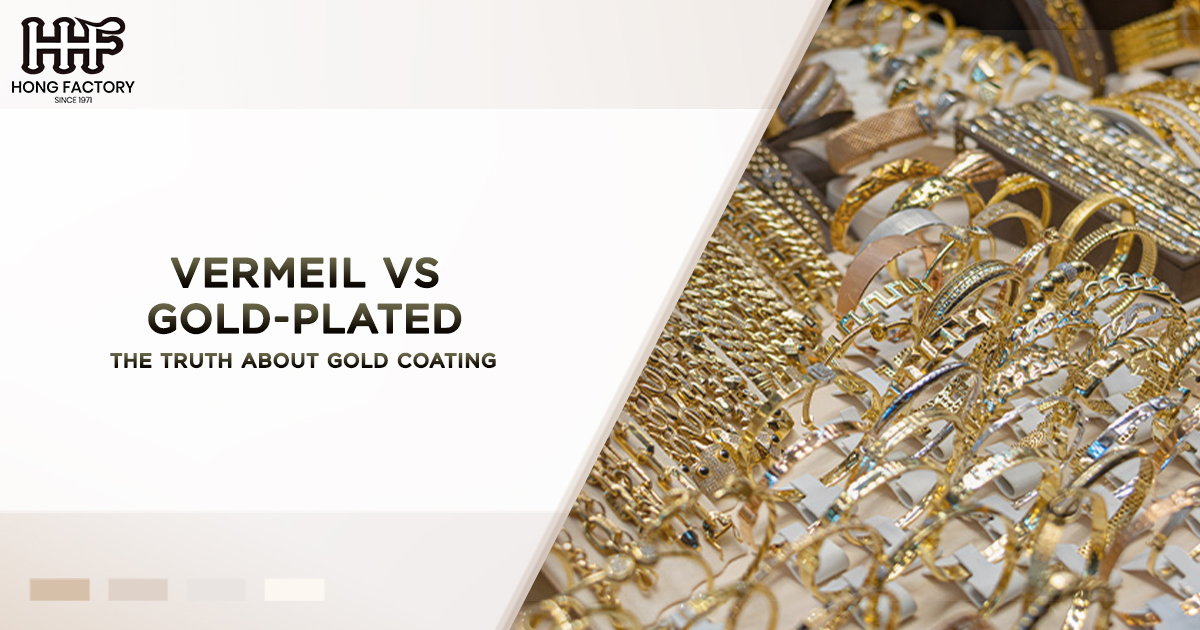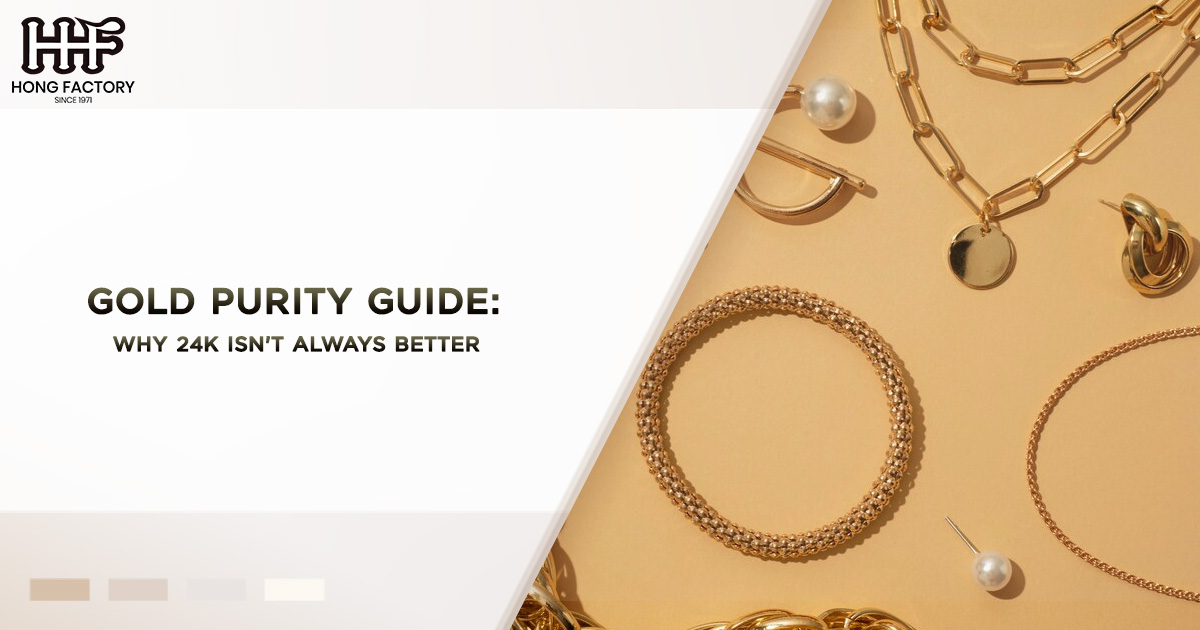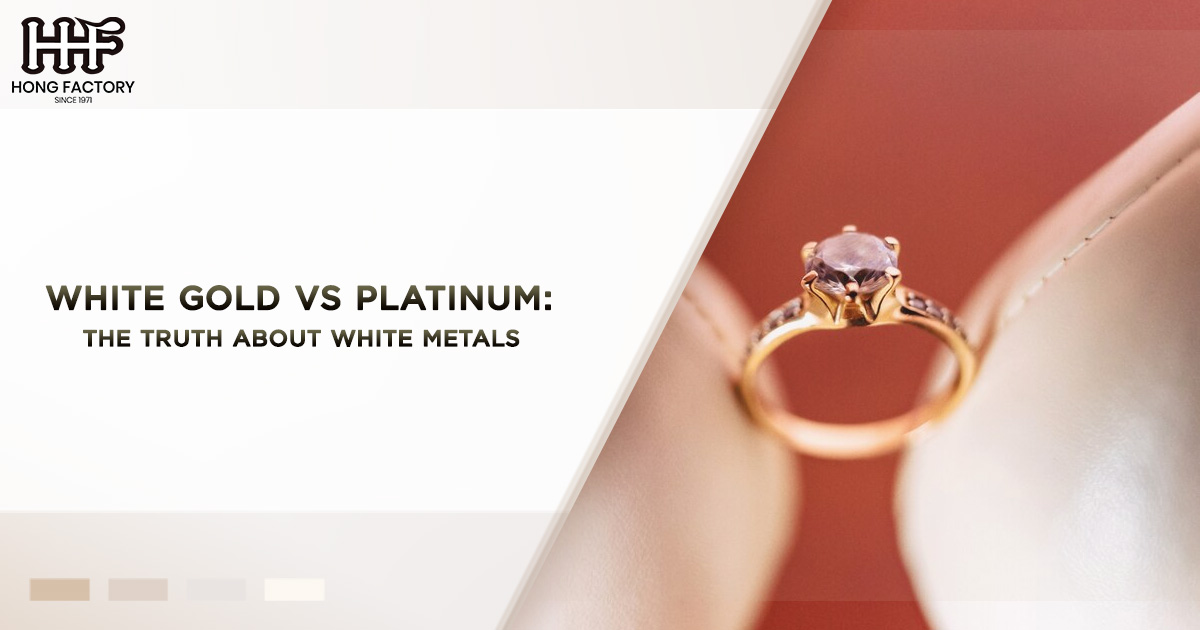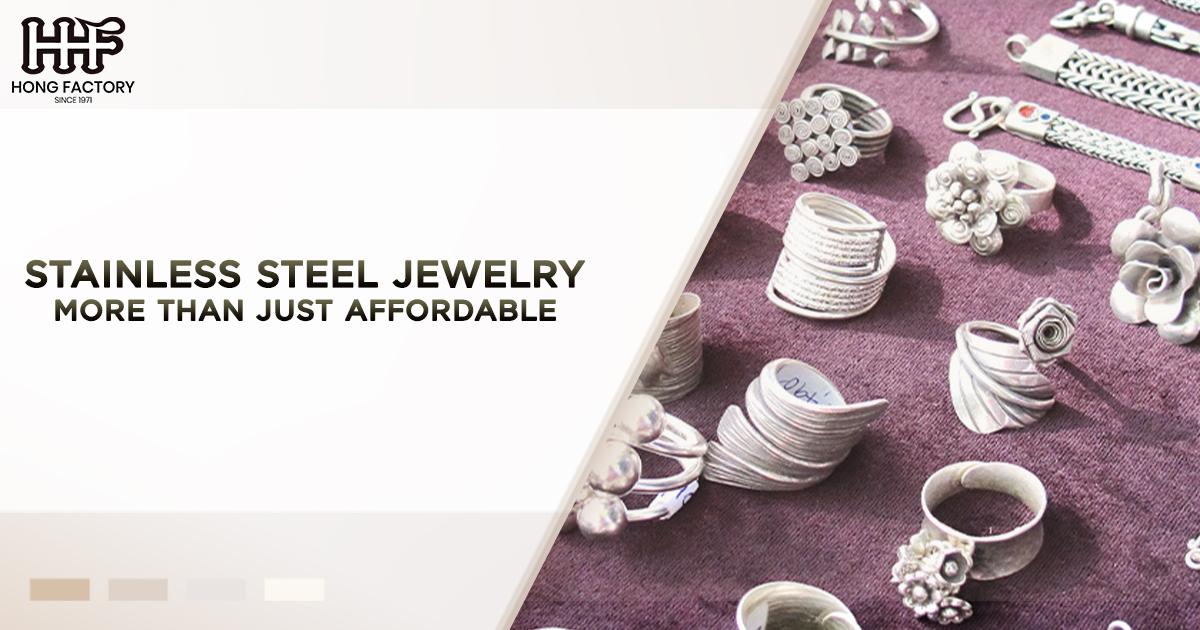Gold-coated jewelry offers a luxurious aesthetic without the high price tag of solid gold, making it an appealing option for style-conscious individuals. Among the most popular options are vermeil and gold-plated jewelry, two distinct methods of gold coating that often lead to confusion. If you’re trying to decide between the two or simply want to understand the differences this article will break it all down. We’ll compare the processes, discuss durability factors, assess value, and provide care tips, helping you make an informed choice about your next jewelry purchase.
What Is Vermeil Jewelry?
Vermeil jewelry (pronounced “ver-may”) is a high-quality option that uses a thick layer of gold over a base of sterling silver. Originating from the French term for gilded silver, vermeil is a luxurious, yet affordable, alternative to solid gold.
To legally qualify as vermeil in most countries, the gold layer must meet specific requirements :
- The base material must be sterling silver.
- Gold must be at least 10 karats or higher.
- The gold coating must be at least 2.5 microns thick (a micron is one-millionth of a meter).
Vermeil jewelry offers a rich, vibrant gold appearance while maintaining an approachable price point, making it a sought-after option for those looking for affordable luxury.
What Is Gold-Plated Jewelry?
Gold-plated jewelry, on the other hand, refers to a broader category of gold-coated pieces. In gold plating, a thin layer of gold is bonded to a base metal, which could be anything from copper to brass or even stainless steel.
Unlike vermeil, there’s no standardized thickness for the gold layer in gold-plated jewelry. For this reason, the quality and durability of gold-plated pieces can vary significantly depending on the manufacturer.
Gold plating is more affordable than vermeil, but it typically lacks the same level of jewelry quality, making it a popular choice for trendy, short-lived fashion accessories.
Process Comparison – Vermeil vs Gold-Plated
The Vermeil Process
The creation of vermeil jewelry involves a process called electroplating. Here’s how it works :
- Base Material Preparation : The base is always sterling silver (92.5% pure silver), which is polished to ensure a smooth surface.
- Electroplating : The sterling silver jewelry is submerged in a solution containing gold and electrolytes, allowing a thick layer of gold to bond to the silver evenly.
- Final Coating : The result is a piece of jewelry with a luxurious gold exterior and a fine sterling silver core.
Since vermeil adheres to strict standards, the gold layer is significantly thicker than in most gold-plated jewelry.
The Gold-Plating Process
Gold plating also uses electroplating but is far less standardized :
- Base Metal Selection : Instead of silver, the base metal varies common options include brass, copper, or stainless steel.
- Electroplating : The base metal is coated with a thin layer of gold, ranging from 0.5 to 2 microns, but often closer to the lower end for cost savings.
- Sealing : To prolong durability, some manufacturers add a clear protective coating over the gold layer.
Gold plating is a more flexible process, allowing for a wide range of price points but generally offering less durability than vermeil jewelry.

Durability Factors – Which Lasts Longer?
Vermeil Durability
Vermeil jewelry’s durability lies in its composition. Thanks to the thick gold layer and sterling silver base, it holds up well to wear and tear. Key factors influencing vermeil’s longevity include :
- Gold Thickness : The 2.5-micron thickness standard ensures that the gold lasts longer without fading or wearing away.
- Base Metal : Sterling silver is relatively resistant to corrosion compared to base metals like brass or copper.
With proper care, vermeil jewelry can last for decades, though exposure to water, perfume, and abrasive surfaces may still gradually wear down the gold layer.
Gold-Plated Durability
Gold-plated jewelry often falls short in the durability department. With a thinner gold coating, it is more prone to :
- Tarnishing : Base metals such as brass and copper are more reactive, leading to visible tarnish as the gold layer wears away.
- Peeling or Fading : Without strict thickness standards, many gold-plated items are not designed to handle prolonged exposure to friction or elements.
While gold-plated jewelry is perfect for short-term wear, you’ll notice fading much sooner than with vermeil.
Value Assessment – Which Offers Better Jewelry Quality?
Why Vermeil Is a Better Investment
When it comes to jewelry quality, vermeil stands out as a better value. Here’s why :
- Higher Gold Content : Vermeil uses gold of at least 10 karats, while gold-plated items often use lower-quality gold.
- Precious Metal Base : Sterling silver, the base for vermeil, is considered a precious metal, adding intrinsic value to the piece.
- Long-Term Wear : The thicker gold layer allows vermeil jewelry to maintain its luxurious appearance over time, offering better cost-per-wear value.
For those seeking affordable luxurywithout compromising quality, vermeil is a standout choice.
Gold-Plated Jewelry: A Budget-Friendly Option
Gold-plated jewelry is best for trend-forward shoppers on a budget. While it doesn’t offer the longevity or intrinsic value of vermeil, it’s an excellent way to try bold designs without a significant investment. However, if you’re prioritizing long-term value and craftsmanship, vermeil is the superior option.
Care Requirements – How to Maintain Vermeil and Gold-Plated Jewelry
Caring for Vermeil Jewelry
With proper care, vermeil jewelry can last for years. Follow these tips to maximize its lifespan :
- Avoid Water Exposure : Take off your vermeil jewelry before showering or swimming, as prolonged moisture can accelerate wear.
- Clean Gently : Use a soft cloth and mild soap to clean your jewelry—avoid abrasive cleaners, as they may scratch the gold layer.
- Store Properly : To prevent scratches, store your vermeil pieces in a soft pouch or separate compartment in your jewelry box.
Caring for Gold-Plated Jewelry
Since gold-plated items are more delicate, extra caution is necessary :
- Store Separately : Gold-plated jewelry can scratch easily, so keep it in a soft pouch or lined box.
- Limit Wear : Avoid wearing gold-plated pieces during rigorous activities or exposure to water and chemicals.
- Replating Options : Over time, the gold layer may wear off. Many jewelers offer replating services to restore the piece’s original shine.
Vermeil vs Gold-Plated Jewelry – Making Your Choice
To summarize, both vermeil and gold-plated jewelry have their strengths, but they cater to different needs.
| Factor | Vermeil Jewelry | Gold-Plated Jewelry |
|---|---|---|
| Base Metal | Sterling silver (precious metal) | Brass, copper, or other alloys |
| Gold Thickness | At least 2.5 microns | Typically 0.5–2 microns |
| Durability | Long-lasting with proper care | Short-lived, fades quickly |
| Jewelry Quality | High | Moderate to low |
| Price | Affordable luxury | Budget-friendly |
If you’re looking for high-quality, long-lasting, and luxurious jewelry, vermeil is the way to go. For more affordable, trendy options, gold-plated pieces are a fun, temporary addition to your collection.
Conclusion
Understanding the key differences between vermeil and gold-plated jewelry can help you make smarter purchasing decisions. Vermeil offers affordable luxury with its thick gold layer and sterling silver base, delivering exceptional jewelry quality and durability. Gold-plated jewelry, while less durable, is a versatile and budget-friendly choice for short-term fashion trends.
Whether you’re looking for a timeless investment or a fleeting accessory, both options have their place in any jewelry collection. By considering factors like durability, value, and proper care, you can enjoy the best of what gold-coated jewelry has to offer.



